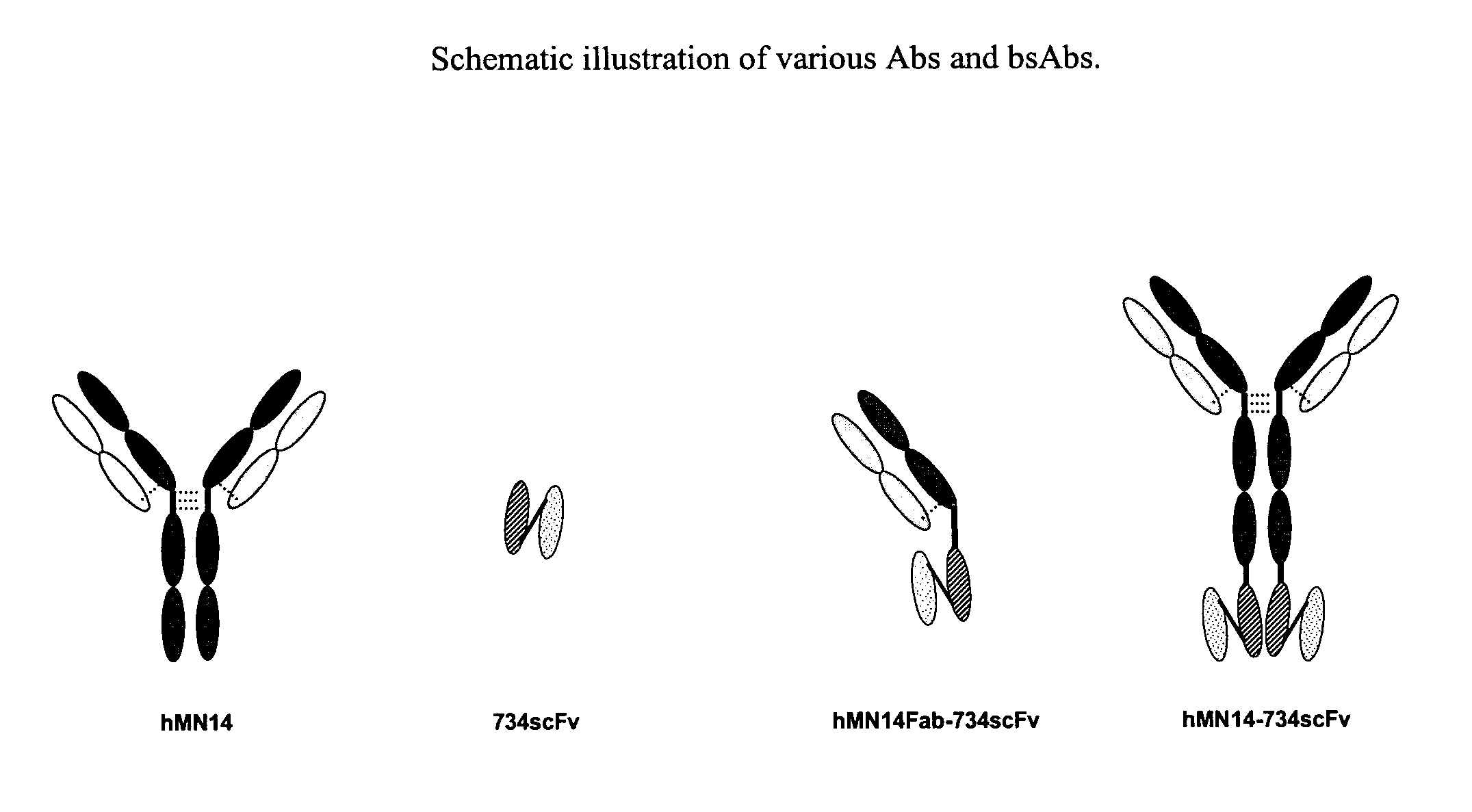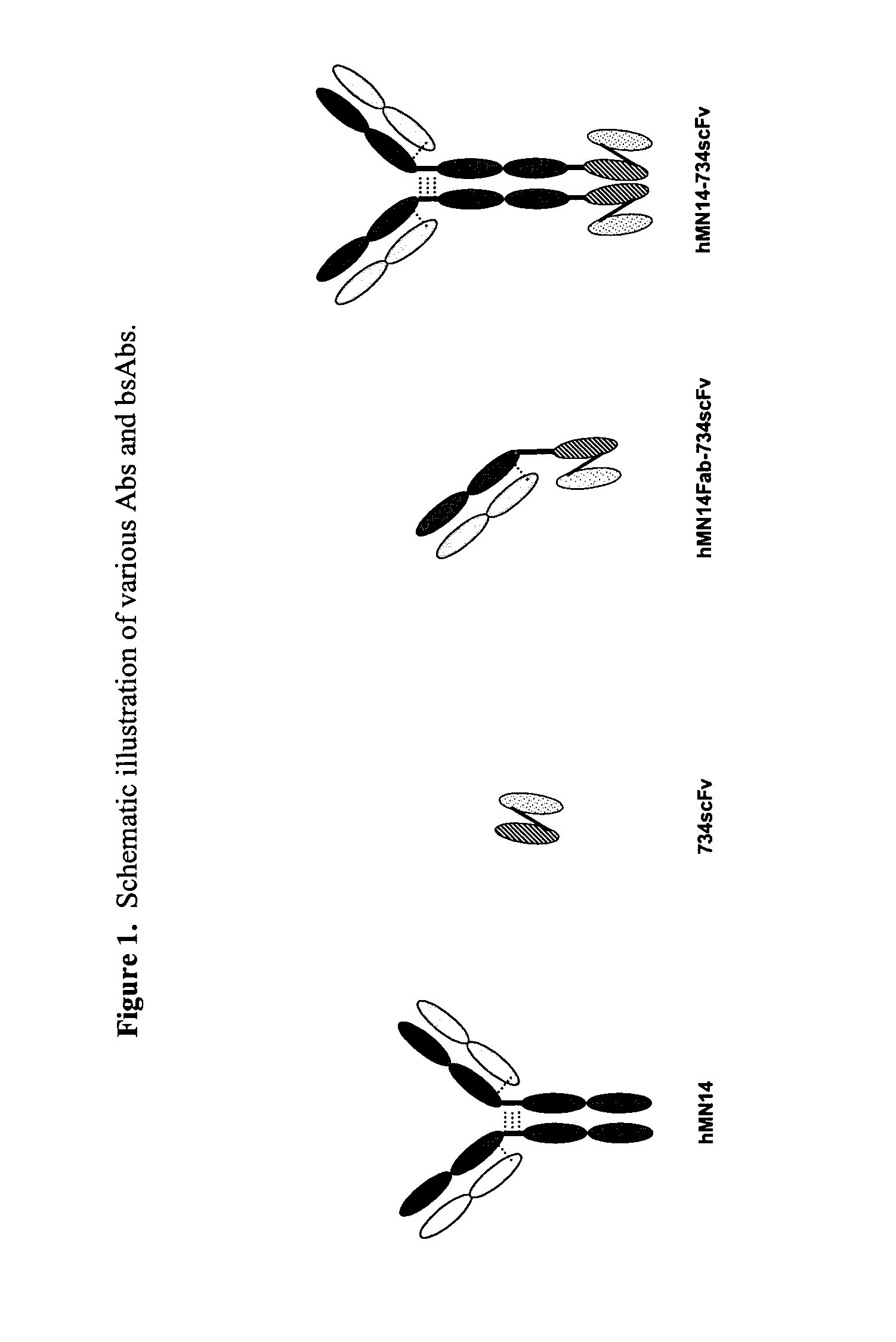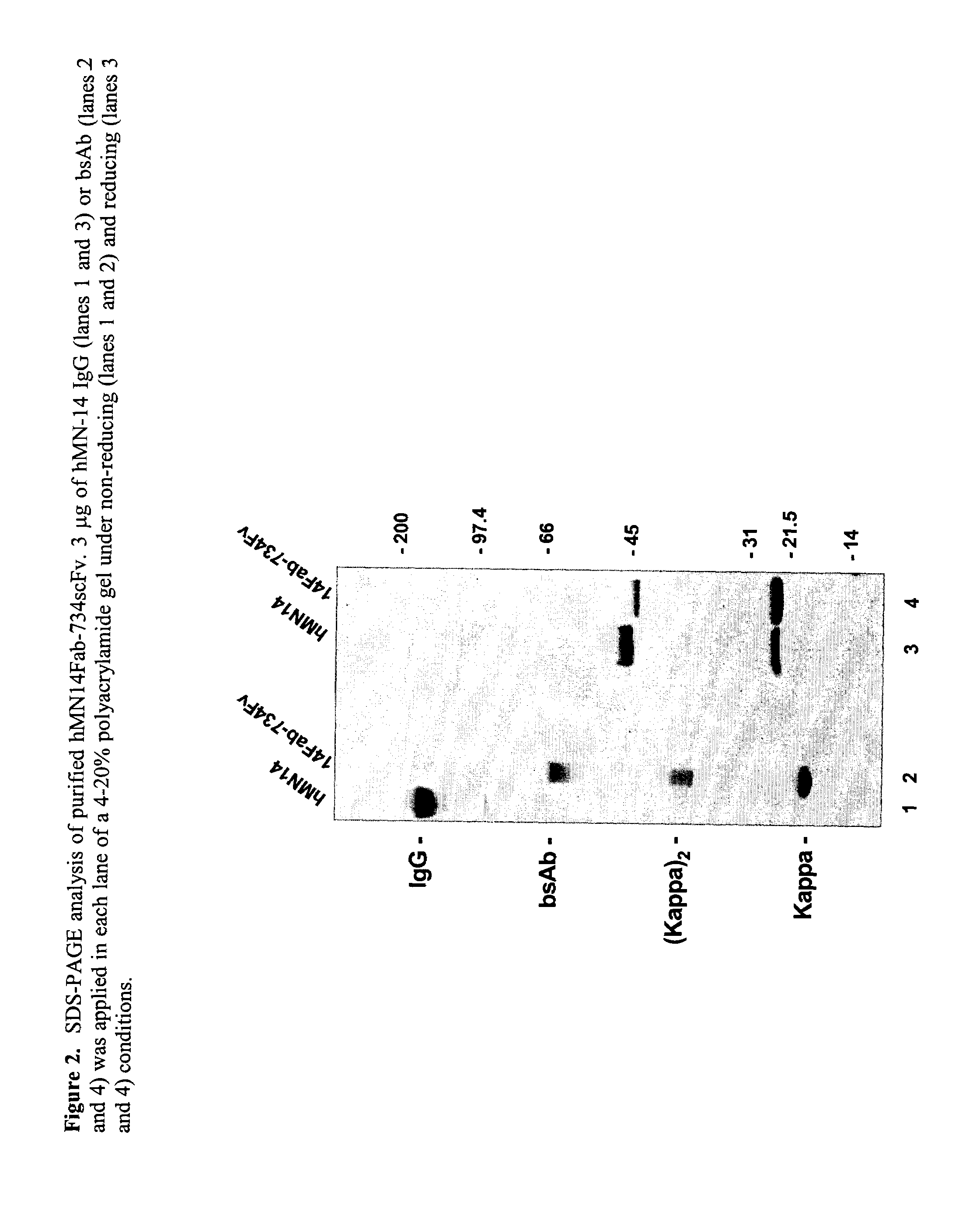Use of bi-specific antibodies for pre-targeting diagnosis and therapy
a technology of bi-specific antibodies and diagnosis, applied in the field of immunological reagents, can solve the problems of inability to readily substitute bi-specific antibodies into available reagents for alternative uses, inability to prepare individual bsabs for each possible application, and great specificity
- Summary
- Abstract
- Description
- Claims
- Application Information
AI Technical Summary
Benefits of technology
Problems solved by technology
Method used
Image
Examples
example 1
Synthesis of a Peptide Antigen
[0117]The peptide, Ac-Phe-Lys(Ac)-Tyr-Lys(Ac)-OH, is assembled using a resin for solid-phase synthesis and attaching the first residue (lysine) to the resin as the differentially protected derivative alpha-Fmoc-Lys(Aloc)-OH. The alpha-Fmoc protecting group is selectively removed and the Fmoc-Tyr(OBut), alpha-Fmoc-Lys(Aloc)-OH, and Fmoc-Phe-OH added with alternate cycles of coupling and alpha-amino group deprotection. The Aloc- and OBut-side-chain protecting groups are then removed by reaction with TFA and the free alpha- and epsilon-amino groups are capped by reaction with acetic anhydride to give Ac-Phe-Lys(Ac)-Tyr-Lys(Ac)-OH.
example 2
Coupling of Ac-Phe-Lys(Ac)-Tyr-Lys(Ac)-OH to KLH
[0118]The peptide, Ac-Phe-Lys(Ac)-Tyr-Lys(Ac)-OH, dissolved in water and pH-adjusted to 4.0 with 1N HCl, is treated with a molar equivalent of 1-ethyl-3(3-dimethylaminopropyl) carbodiimide and allowed to react for 1 h at 4° C. Keyhold limpet hemocyanin (KLH) buffered at pH 8.5 is treated with a 100-fold molar excess of the activated peptide and the conjugation reaction is allowed to proceed for 1 h at 4° C. The peptide-KLH conjugate is purified from unreacted peptide by size-exclusion chromatography and used for antibody production.
example 3
Generation of an Anti-Peptide Ab
[0119]Immunocompetent mice are injected with a mixture of the peptide antigen in complete Freund's adjuvant. Two booster shots of the peptide mixed with incomplete Freund's adjuvant are administered over the next several weeks. Spleen cells are harvested from the animals and fused with Sp2 / 0-Ag14 myeloma cells. Culture supernatants of the resulting clones are analyzed for anti-peptide reactivity by ELISA, using plates coated with the original peptide immunogen. Enzyme-deficient hybridomas are isolated to enable selection of fused cell lines, and selected clones grown in culture media to produce the anti-peptide Abs.
PUM
| Property | Measurement | Unit |
|---|---|---|
| molecular weight | aaaaa | aaaaa |
| molecular weight | aaaaa | aaaaa |
| molecular weight | aaaaa | aaaaa |
Abstract
Description
Claims
Application Information
 Login to View More
Login to View More - R&D
- Intellectual Property
- Life Sciences
- Materials
- Tech Scout
- Unparalleled Data Quality
- Higher Quality Content
- 60% Fewer Hallucinations
Browse by: Latest US Patents, China's latest patents, Technical Efficacy Thesaurus, Application Domain, Technology Topic, Popular Technical Reports.
© 2025 PatSnap. All rights reserved.Legal|Privacy policy|Modern Slavery Act Transparency Statement|Sitemap|About US| Contact US: help@patsnap.com



